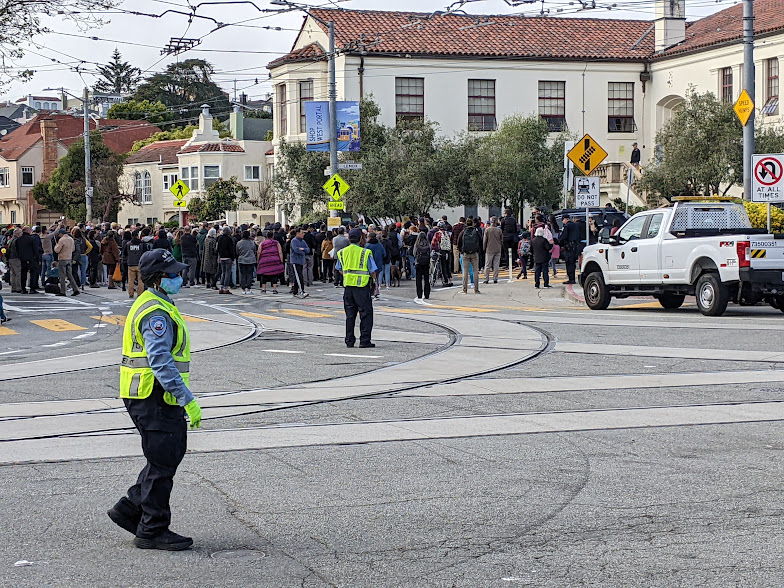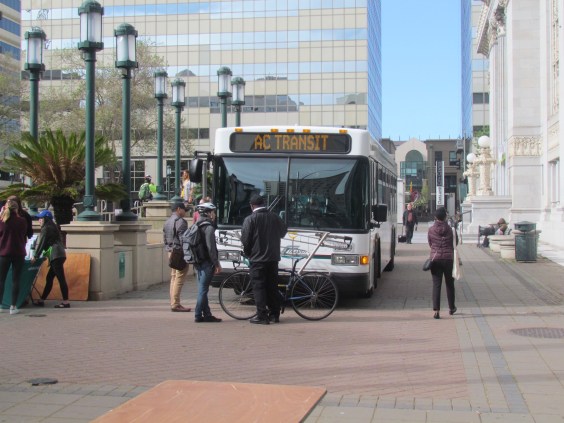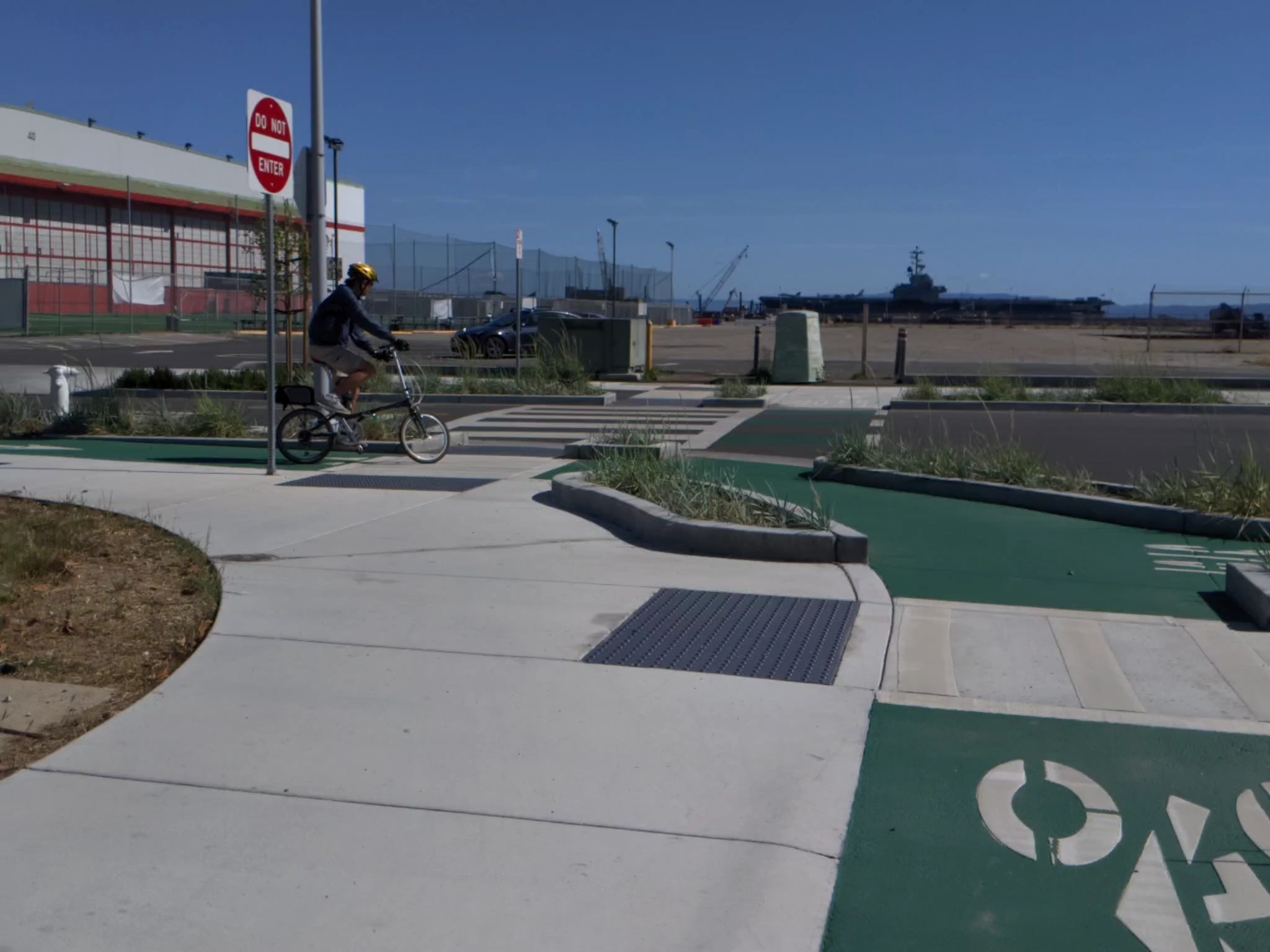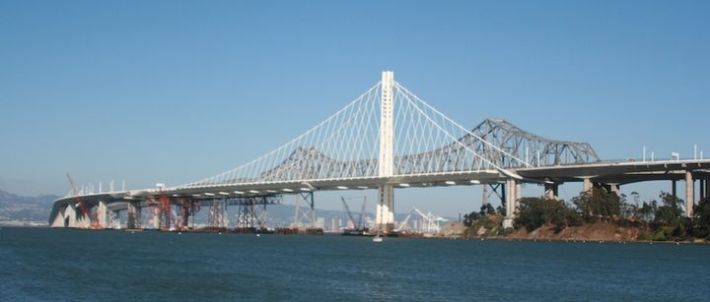
Huge projects, such as the new eastern span of the Bay Bridge, can define a region and transform the fabric of a city--but they are often delayed and come in massively over budget. Karen Frick, Co-Director of the University of California Transportation Center at Berkeley, attempted to deconstruct megaprojects and how to manage them more effectively in a presentation this afternoon at the San Francisco Bay Area Planning and Urban Research Association's (SPUR) center in Oakland.
"The Transbay crossing, High-Speed Rail, the Bay Bridge, these are all megaprojects," said Egon Terplan, Regional Planning Director for SPUR, who kicked off the presentation. "How do they get started? How do they go over budget? And why are they so costly, captivating, controversial, and complex?" he asked.
And how do we avoid so many delays and problems in the future?
More on that below, but first, Frick broke down what went wrong with the famously over-budget Bay Bridge.
The reasons for the cost overruns were multifold, she explained. As most Streetsblog readers surely know, it was partially due to fights about what the bridge would look like. Originally, back in 1995, Caltrans proposed a seismic retrofit. But a replacement seemed only a little bit more expensive. "Estimates were $1.17 billion to replace, versus $915 million to retrofit," she said, which convinced leaders that a replacement was worth doing. But things ballooned from there--to $6.4 billion, ultimately.
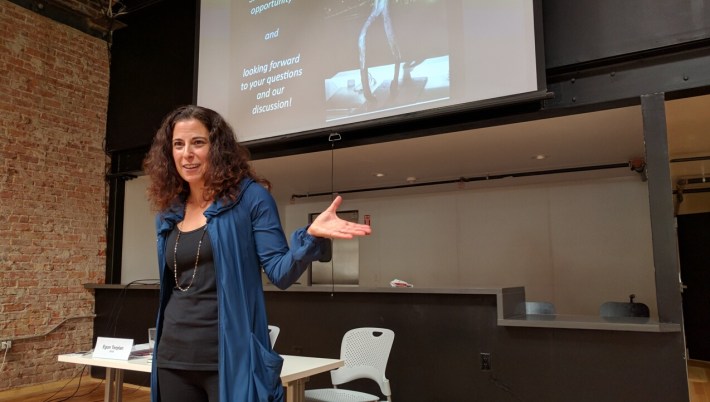
Megaprojects suffer from underestimated costs for a variety of reasons, including "strategic misrepresentation," which might also be called "lying," explained Frick. Officials, determined to sell a project, will sometimes intentionally underestimate costs. But it's often also a function of engineers being overly optimistic, she explained. And it can be hard to distinguish between the two.
That said, sometimes the desire for something that is "technologically sublime, inspiring awe and wonder," also gets in the way, said Frick. The original bridge span was supposed to be a simple viaduct, but the Bay Area wanted a "post card" bridge. "It's the idea that infrastructure must fit the landscape; think of the Golden Gate Bridge," she added. That led to all sorts of political wranglings and cost increases.
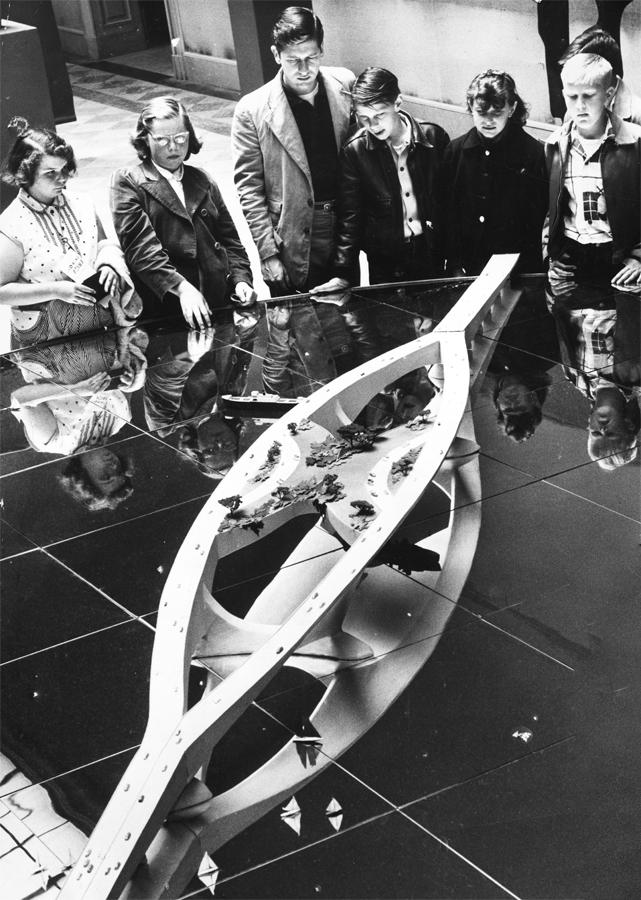
"Caltrans knew the Bay Area wouldn’t be happy with the viaduct, so they then proposed a two-tier cable span. But the Bay Area was still unhappy and it got a multi-year process that lasted through five governors!" explained Frick. That's a lesson for future plans, such as any new Transbay crossing. "Plan for many governors [and the shifting priorities they bring]," she added.
CityLab has a great timeline/breakdown of the cost overruns and delays of the Eastern span as chronicled in Frick's book, Remaking the San Francisco-Oakland Bay Bridge.
So how do we avoid a repeat performance of the Oakland Bay Bridge, in terms of massive delays and cost overruns, when tackling HSR, a second Transbay tube, and other coming or proposed megaprojects?
Some of the cost overruns were probably unavoidable. For example, said Frick, insurance costs surged after the terrorist attacks of 9/11. And then steel prices increased by fifty percent. Additionally, because of all the seismic retrofits going on in California at the time, the construction industry didn't have enough engineers and workers, which stretched out the time line.
But there are also areas where municipalities can do much better.
First of all, said Frick, agencies need to stop pricing projects just based on capital costs, which gives the public an incomplete appraisal. "Account for transactional costs and lawsuits. Do risk analysis. Include financing costs," she said. "Financing costs can double the price."
And "Do regular, external independent peer reviews," she said.
Streetsblog wondered if leaders at Caltrans and the other relevant agencies couldn't have better stressed the urgency of the project, to avoid getting bogged down with aesthetic considerations. After all, this project was about replacing a bridge that could have collapsed in an earthquake. Streetsblog recalls an interview with a Caltrans engineer who said it never should have been re-opened in 1989, because nobody really knew if it could survive another temblor.
Meanwhile, here we are in 2016, nearly thirty years after Loma Prieta--the impetus for replacing the bridge in the first place--and the County Transportation Authority has finally announced the ribbon cutting for new westbound on- and off-ramps connecting Treasure Island/Yerba Buena Island to the Bay Bridge.
That means the car part of the bridge will finally be done. Any day now the bike path along it will connect Oakland to the island. As to continuing the bike path to San Francisco, still waiting.
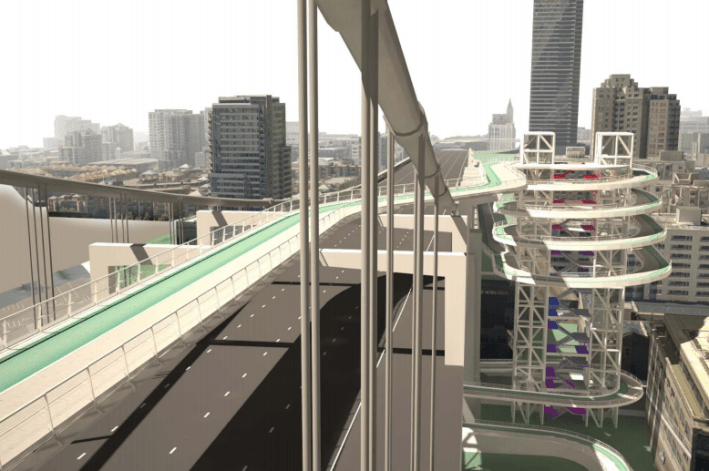
For more events like these, visit SPUR’s events page.
